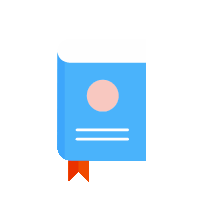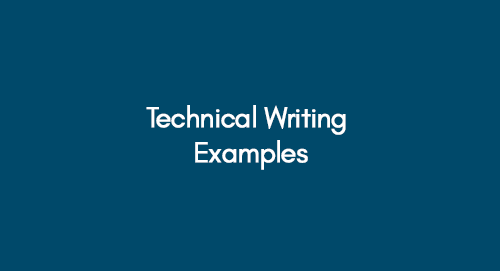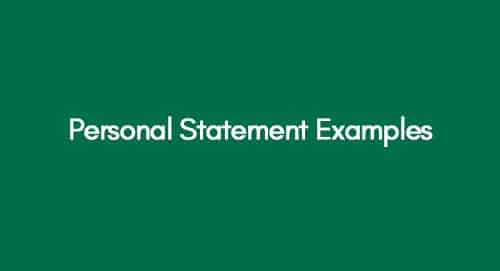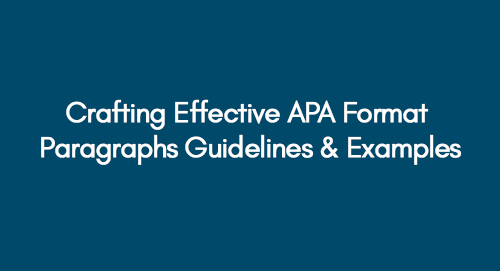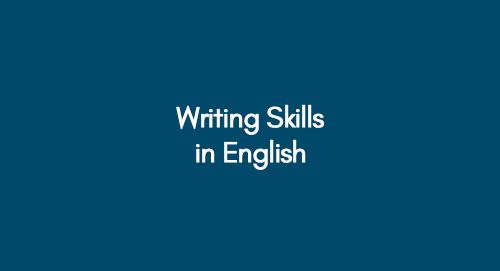
How to Improve Writing Skills in English| A Beginner’s Guide
May 23, 2023
Persuasive Writing Examples
May 25, 2023Effective communication is essential for bridging the gap between complex concepts and everyday users in a world increasingly driven by technology. This is where technical writing comes into play. Technical writing is the art of conveying intricate information in a clear manner.
Find a Topic for Your Dissertation on Our Complete List
Check Out Our Dissertation Examples
In this blog post, we'll explore some real-world technical writing examples that demonstrate how this unique style of writing can make complex topics accessible to a broad audience.
Example 1: Challenges of Encouraging Construction Waste Reduction in Commercial Projects
Example 2: The Impact of Airport Terminal Expansion on Customer Services
Note: Below is a complete guide with some more examples and types for you to ace the skill of technical writing.
What is Technical Writing?
To convey complex and technical information in an easy-to-understand manner. If you are interested in a career in technical writing, there are a few things you can do to prepare. First, you should develop strong writing skills.
You should also be able to understand and explain complex technical concepts. In addition, you should be able to use a variety of writing tools and software.
There are many resources available to help you learn more about technical writing. You can find books, articles, and online courses that can teach you the skills you need to succeed in this field.
Here are some additional tips for writing technical documentation:
- Use clear and concise language.
- Avoid using technical terms unless they are absolutely necessary.
- Use visuals to help explain complex concepts.
- Make sure your documentation is easy to find and use.
- Test your documentation with users to make sure it is clear and easy to understand.
By following these tips, you can write technical documentation that is clear, concise, and easy to use.
Technical Writing Examples To Note
Technical writing is a broad field that encompasses a wide variety of writing tasks.
From user manuals to white papers, technical writers are responsible for communicating complex information in a clear and concise way.
Check out a few examples of technical writing:
User Manuals
To help users understand how to operate a product or service. They typically include step-by-step instructions, diagrams, and troubleshooting tips.
Software Installation Guides
Use guides to help users install and configure software. They typically include instructions for downloading, installing, and configuring the software and troubleshooting tips.
Standard Operating Procedures (SoPs)
A professionally written document of how a business or organisation process is performed. They typically include step-by-step instructions, diagrams, and checklists.
API Documentation
It helps developers understand how to use an application programming interface (API). It typically includes information about the API's methods, parameters, and return values.
Services Level Agreements (SLAs)
A service level agreement (SLA) documents the terms of a contract between two parties. They typically include information about the services that will be provided, the expected service level, and the penalties for non-compliance.
These are just a few examples of the many types of technical writing that exist. But there are a variety of writing styles and techniques to communicate complex information in a clear way. Understanding what you're writing and who you're writing to is important.
Types of Technical Writing
Choose the technical writing types that will best suit your needs.
The main types of technical writing include:
Informational/Expository Writing
This type focuses on providing information or explaining concepts in an easy way to the audience or reader.
It includes user manuals, technical guides, textbooks, online help documentation, and reference materials. The goal is to convey complex information in an easily understandable way to the intended audience.
Instructional/Procedural Writing
Instructional writing provides step-by-step instructions on how to perform a task or process. It includes procedures, standard operating procedures (SOPs), training materials, assembly instructions, and installation guides. The aim is to guide the reader through a specific set of actions or tasks in a clear and logical manner.
Persuasive/Promotional Writing
Persuasive writing aims to convince or persuade the reader to take a specific action or adopt a particular viewpoint. It includes marketing materials, sales proposals, white papers, and product/service descriptions. The goal is to present information in a compelling manner to influence the reader's decision-making process.
Analytical/Research Writing
It involves examining data, research findings, or complex topics to draw conclusions and make informed recommendations. It includes technical reports, research papers, feasibility studies, and case studies. The objective is to present a thorough analysis of a subject and provide evidence-based insights or solutions.
Reference Writing
It involves creating indexes, glossaries, and other supplementary materials that help users navigate and understand complex information. It includes indexes, glossaries, appendixes, and reference guides. The aim is to provide quick access to specific information or clarify terminology and concepts.
Descriptive Writing
It focuses on describing a product, system, or process in detail. It includes technical specifications, product descriptions, design documents, and engineering reports. The objective is to comprehensively understand the subject by describing its features, characteristics, and functionalities.
Collaborative Writing
Collaborative writing involves the collaborative effort of multiple authors or subject matter experts to create technical content. It includes wikis, knowledge base articles, and collaborative project documentation. The aim is to leverage the collective knowledge and expertise of a group to create comprehensive and accurate technical information.
These types are not mutually exclusive, and technical writing often incorporates elements from multiple categories depending on the specific requirements of the document or project. Technical writers adapt their writing style and approach based on the category of technical writing and the target audience's needs.
Conclusion
Technical writing is an art that expresses any difficult or puzzle writing or document in a very simple and defined way. Unlike creative writing, technical writing doesn’t target emotions, but its goal is to turn the complexity into easy-to-read. A subtle form of writing needs to be highly user-centric and understandable. Technical writers should create documents that promote your products and make them easy to read and understand.
Get 3+ Free Dissertation Topics within 24 hours?















